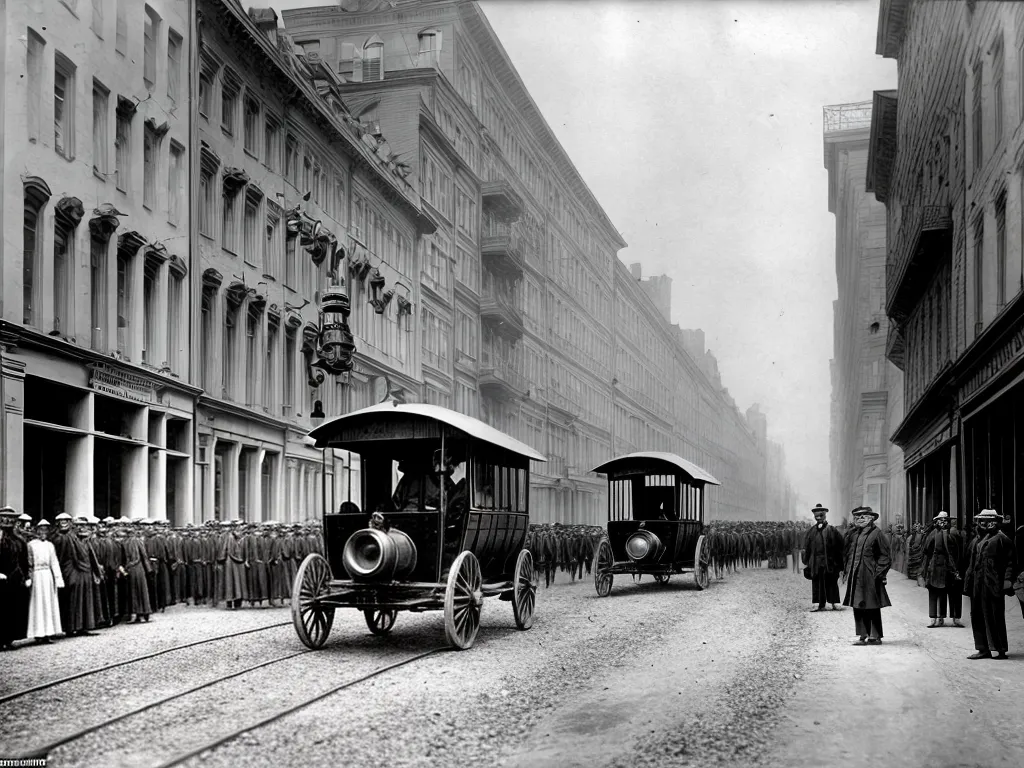
How the First Electric Street Lights Were Powered by Underground Cables
Introduction
The adoption of electric street lighting in the late 19th century marked a major advancement in urban infrastructure and changed the nighttime landscape of cities around the world. But behind the glowing lamps were underground networks of cables that made electric street lighting possible. This article will explore how the first electric street lights were powered by underground cables and the historical development of this technology.
Early Experiments with Electric Street Lighting
In the early 1880s, electric street lighting was still in its infancy. Inventors and entrepreneurs were racing to develop and deploy commercially viable lighting systems in cities. Thomas Edison led the charge in the United States, carrying out initial tests of his incandescent lamps in Menlo Park, New Jersey in 1879.
However, the challenge was not just the light bulbs themselves but how to distribute electricity to power them. Edison chose to use underground conductor networks for his early electric street lighting systems. This consisted of copper cables insulated with cotton and lead that were buried a few feet underground.
The First Permanent Electric Street Lighting Systems
In 1882, Edison installed his first permanent outdoor electric lighting system in London. It consisted of 57 lamps powered by underground cables stretching over one-fifth of a mile. Later that year, on September 4, 1882, Edison switched on his iconic system in New York City on Pearl Street in lower Manhattan. More than 80 lamps illuminated the financial district.
This Pearl Street system marked the true arrival of electric street lighting, proving its commercial feasibility. The network involved 6 miles of underground conductors powering over 400 lamps. As other cities rushed to install electric street lighting, underground cables became the default method to distribute electricity.
Underground Cable Networks Spread
In the following decades, underground cable systems were laid out across many major cities in America and Europe to electrify street lighting. Laying the cables involved excavating trenches, laying conductors, and refilling the earth. The work was labor-intensive but allowed lights to be installed without overhead poles and wiring.
Early Underground Cable Designs
The underground cables developed by Edison and others consisted of a copper conductor with cotton insulation coated in lead casing. The lead protected the wires from moisture while the cotton provided electrical insulation. Outer layers helped strengthen the cables. Jute or linen soaked in compound was used.
The thickness of underground cables varied. Larger power cables were over an inch thick while smaller distribution cables measured under half an inch. Improvements in insulators and casing materials were made over time. For example, rubber and asphalt eventually replaced cotton and lead.
Powering More than Just Street Lights
While initially installed for street lamps, the underground cable networks also supplied electricity to nearby buildings and businesses. As electricity demand grew in cities, the underground cables formed the backbone of electrical distribution systems.
The first underground cables were low-voltage, usually 100-200 volts. This was suitable for short distances powering street lamps and small buildings. But higher voltages were eventually used, such as 1000 volts, to meet rising electricity needs.
The Shift to Alternating Current
The spread of alternating current (AC) systems in the 1890s led to changes in underground cable networks. Thomas Edison had championed the use of direct current (DC) for his lighting systems. However, AC offered the advantage of changing voltages for distribution.
Nikola Tesla's AC Systems
Inventor Nikola Tesla pioneered the use of AC for power transmission. His work with George Westinghouse led to AC networks being installed. By 1896, Niagara Falls was being harnessed to generate AC electricity. Underground cables distributed this power to Buffalo, New York over 15 miles away.
Phasing Out Direct Current
The superiority of AC for transmitting electricity over distances spelled the end for Edison's DC network. New York's underground cables were converted to AC in the late 1890s. From the generating plants, high voltage AC was sent through underground transmission cables across districts. Local transformers then converted the electricity to lower voltages for distribution through street-level cables.
Legacy on Urban Infrastructure
The pioneering of underground cable networks for electric street lighting would have a lasting influence. Cities continued burying electrical distribution lines over the next decades. Although overhead cables still existed, undergrounding cables improved aesthetics by removing unsightly wiring from view.
It also provided some protection from weather events and other disturbances. Maintaining underground cables remained challenging however. But the original vision of underground cable networks powering brightly lit city streets continues to this day in urban areas around the world.
Conclusion
The successful adoption of electric street lighting in the 19th century owed much to the development of underground cable systems. From Edison's first DC lighting networks to the spread of AC power, buried electrical cables enabled the illumination of public spaces and expansion of electricity access. The underbelly of wires and transformers below cities grew increasingly vast and complex over time. Yet it all started with those early pioneering experiments to send power through cables underneath the streets. The lasting legacy was changed urban landscapes with the glow of electric lights.